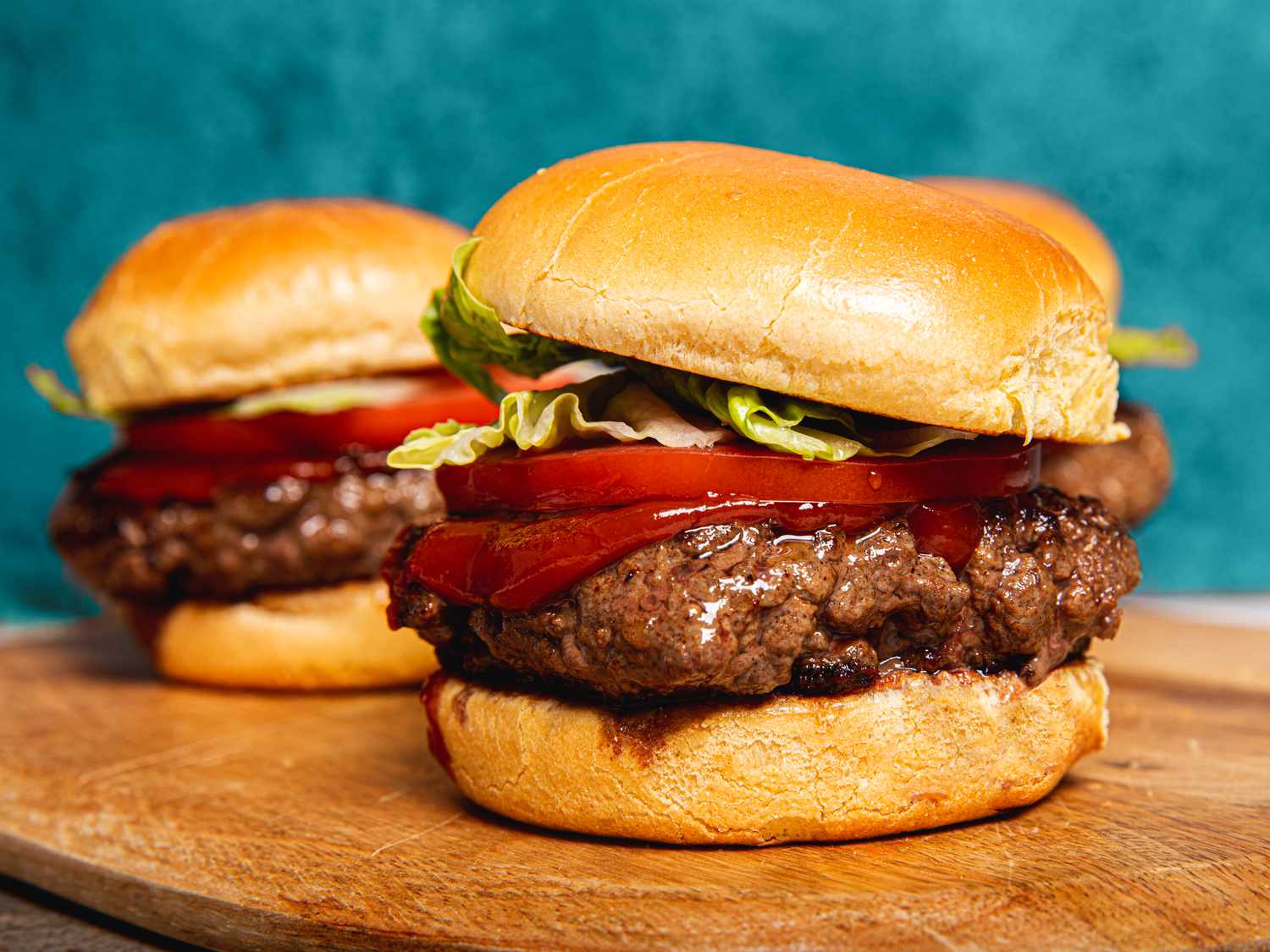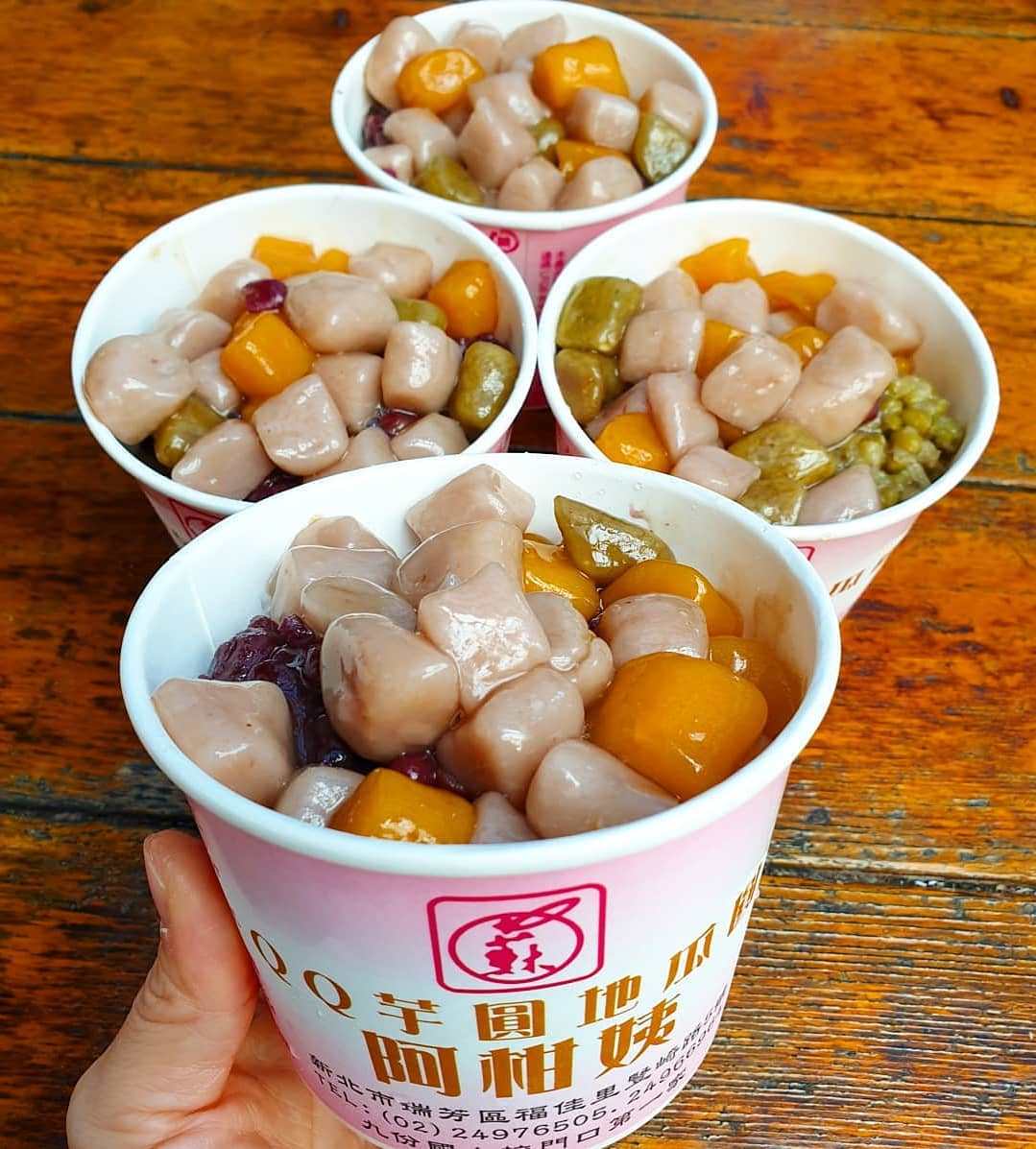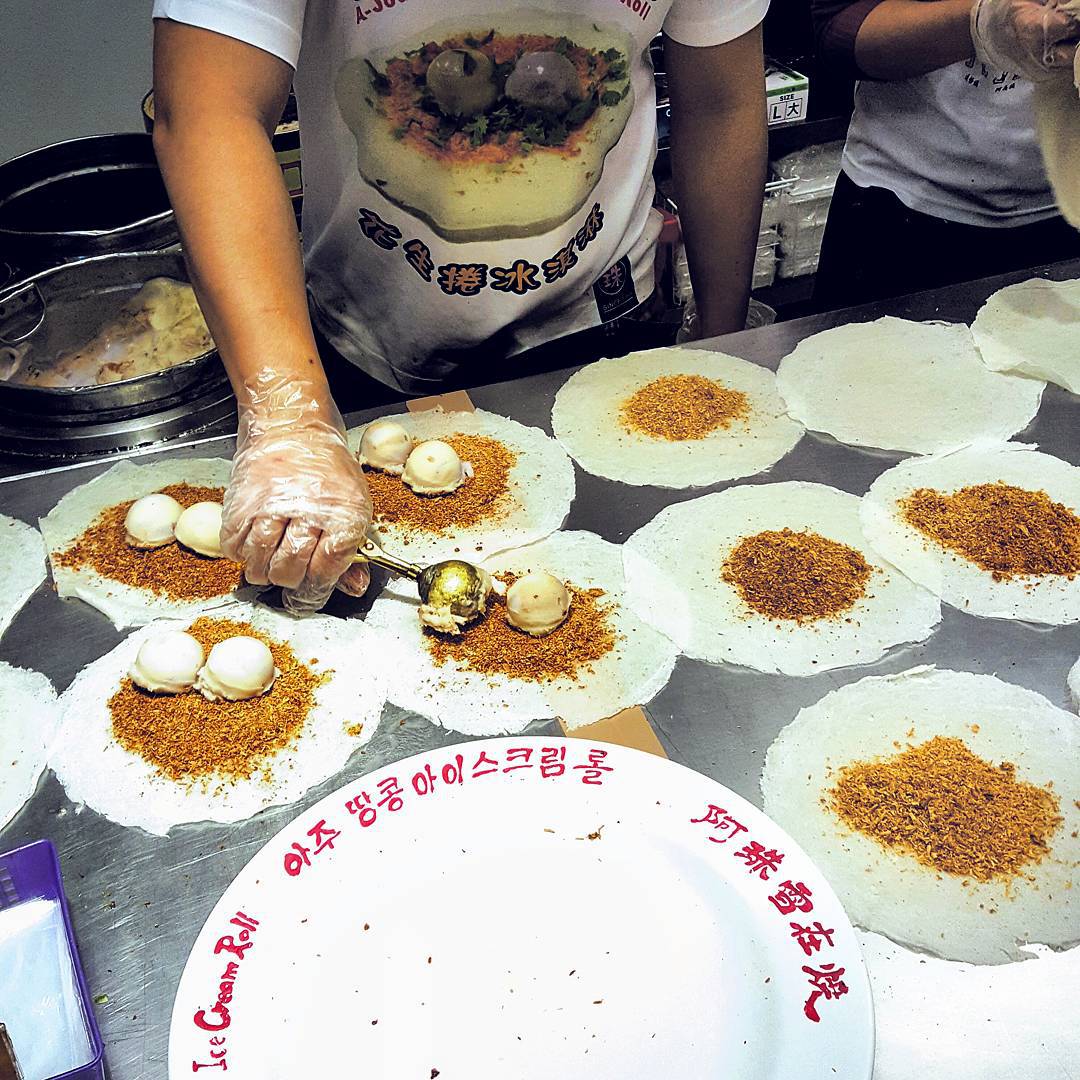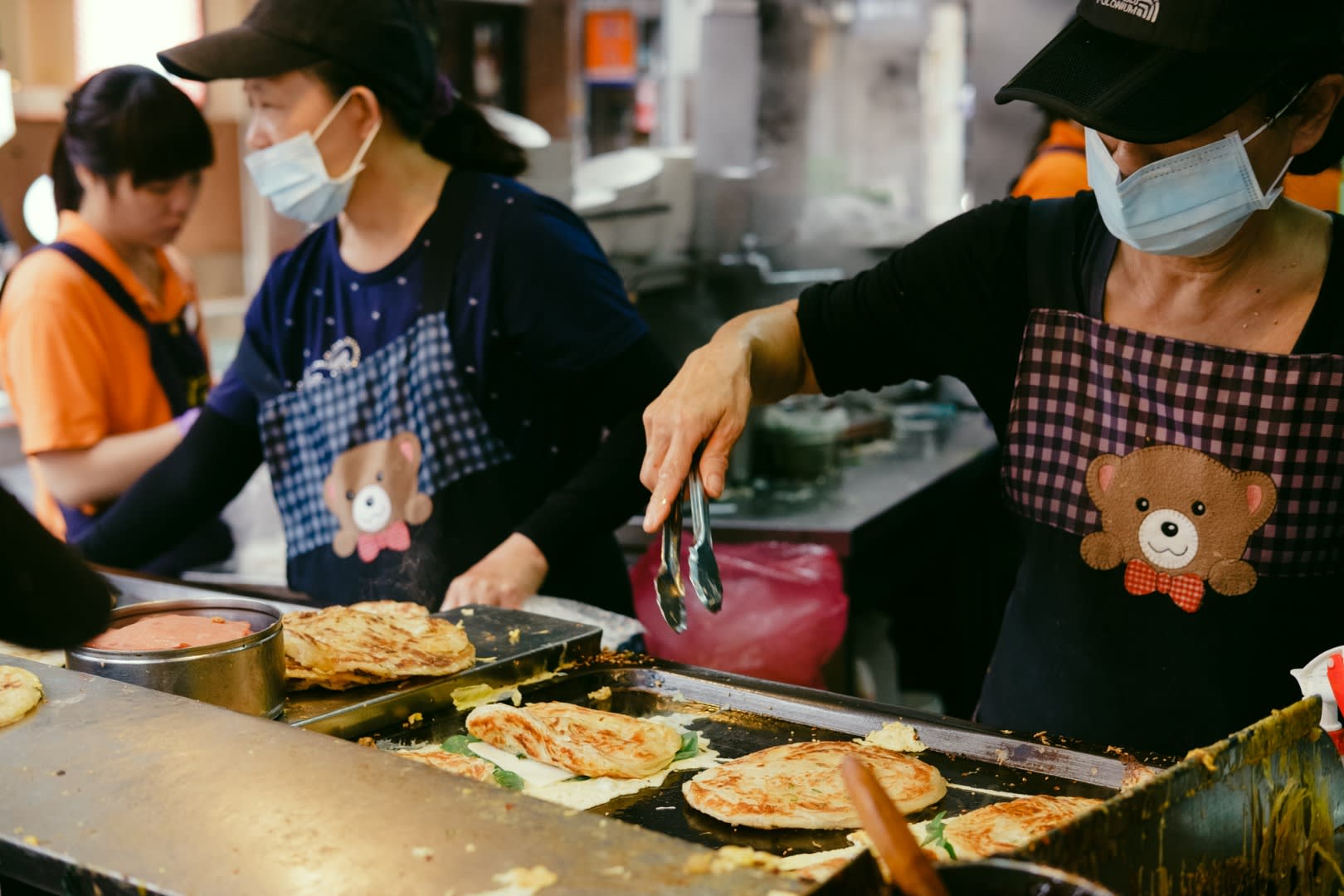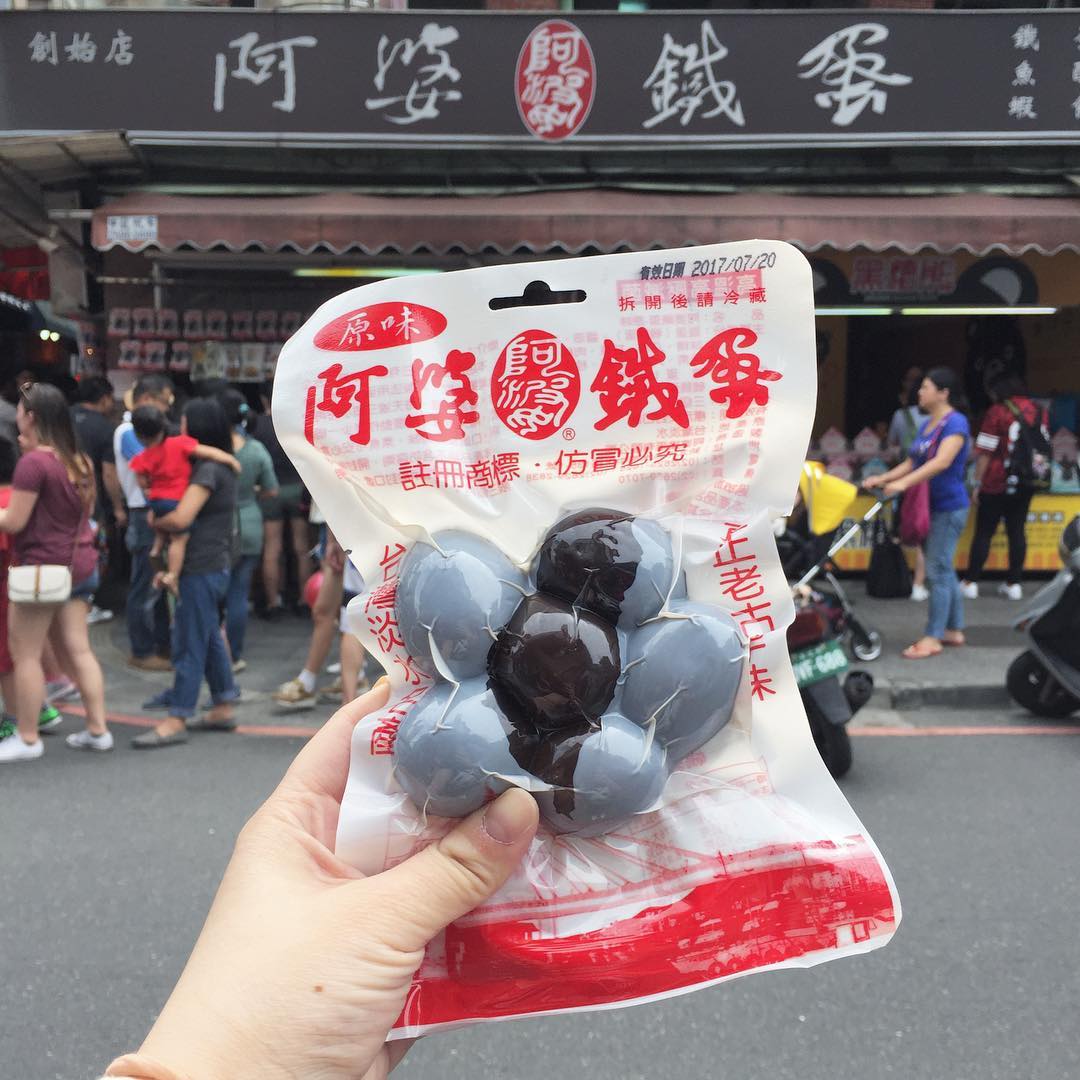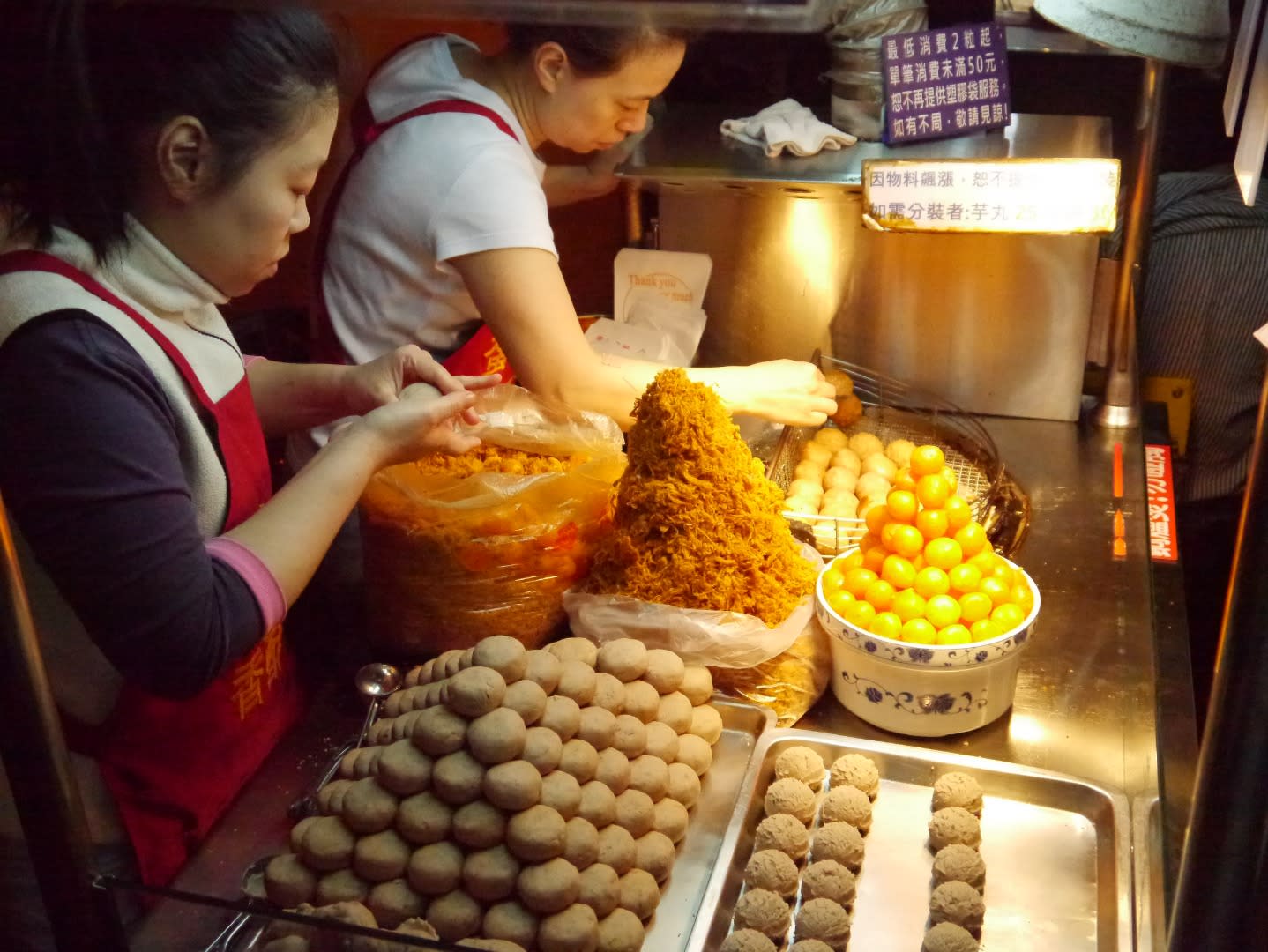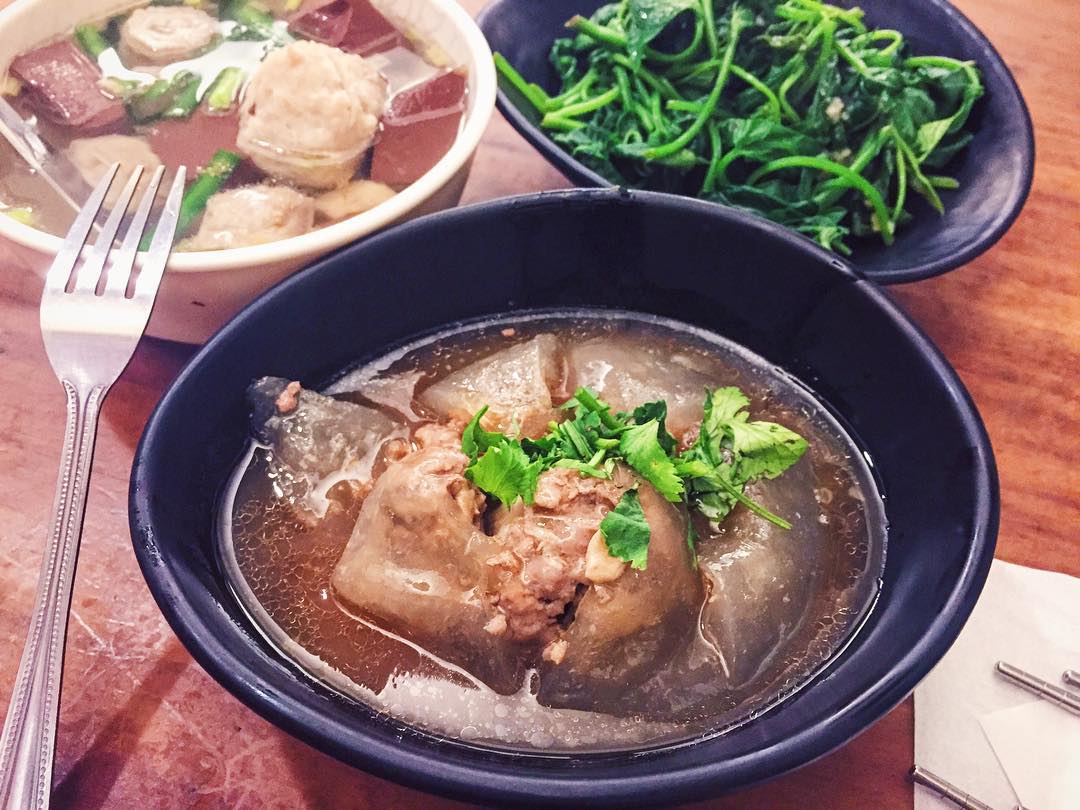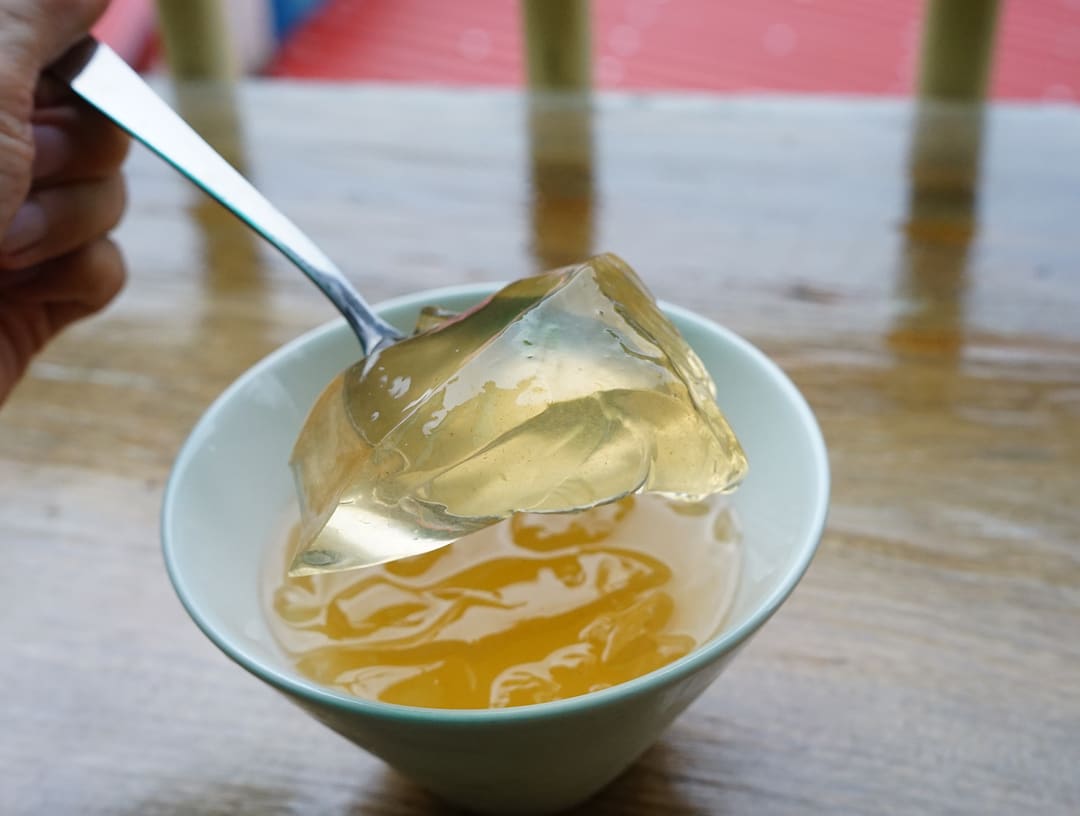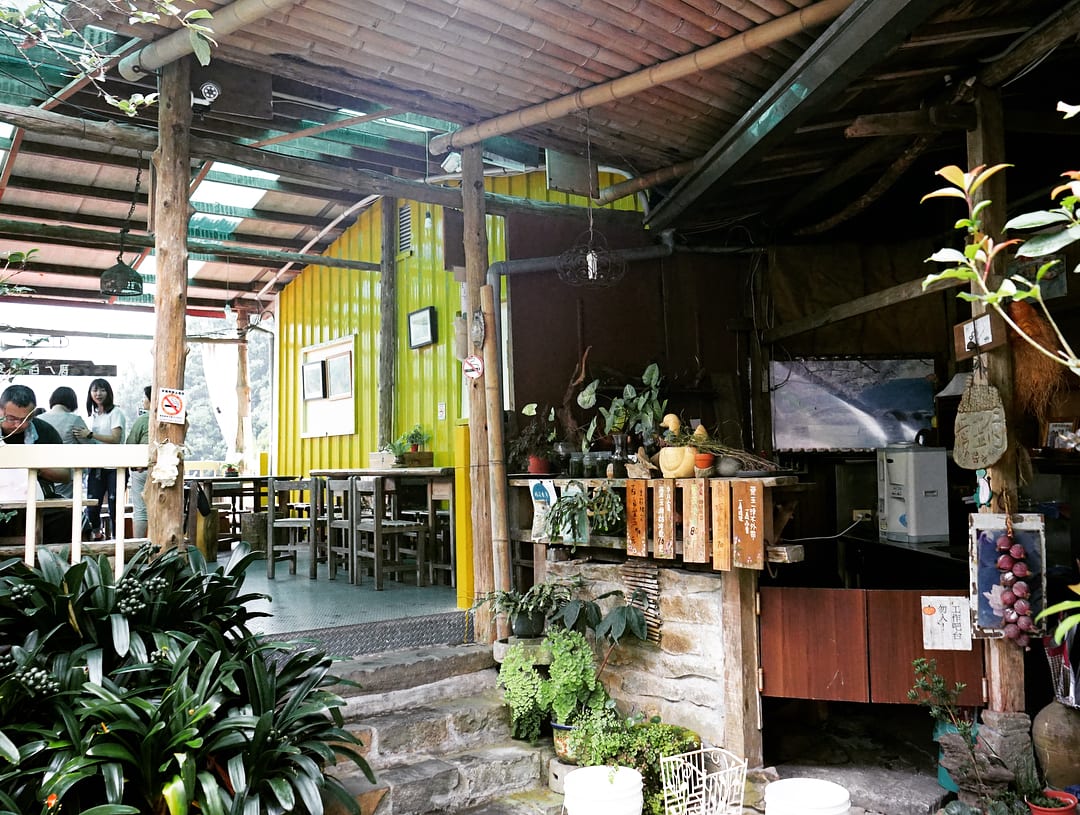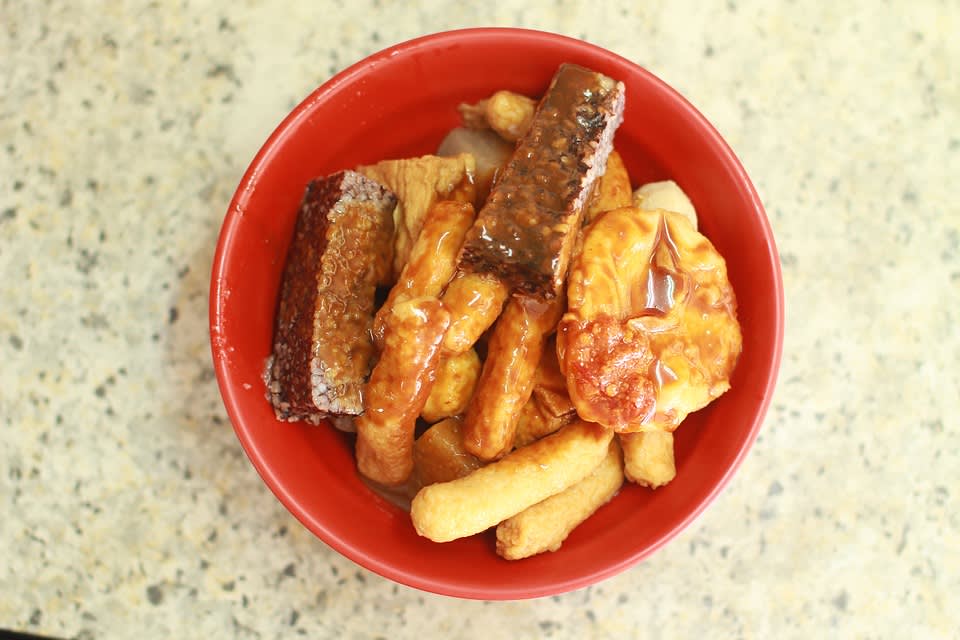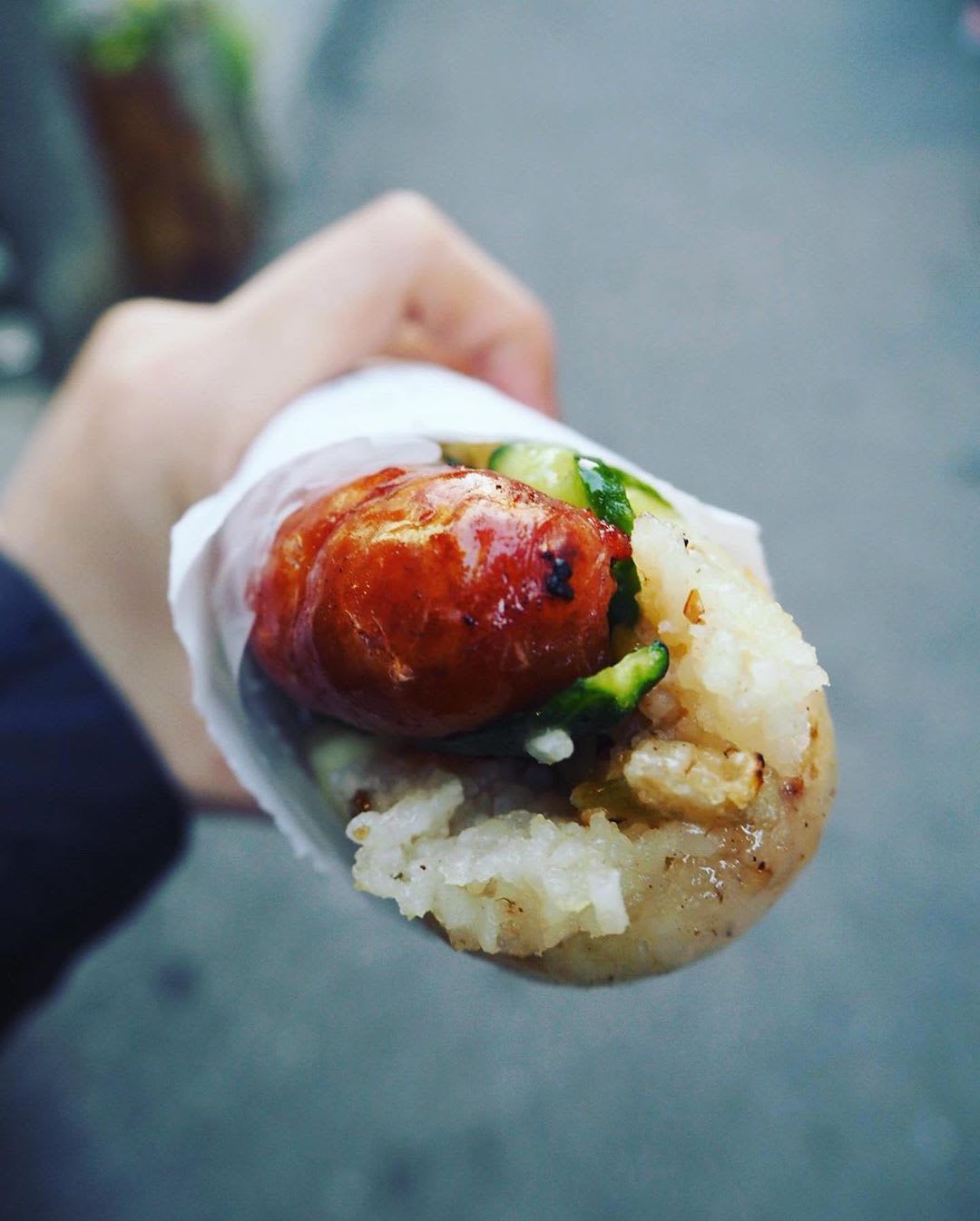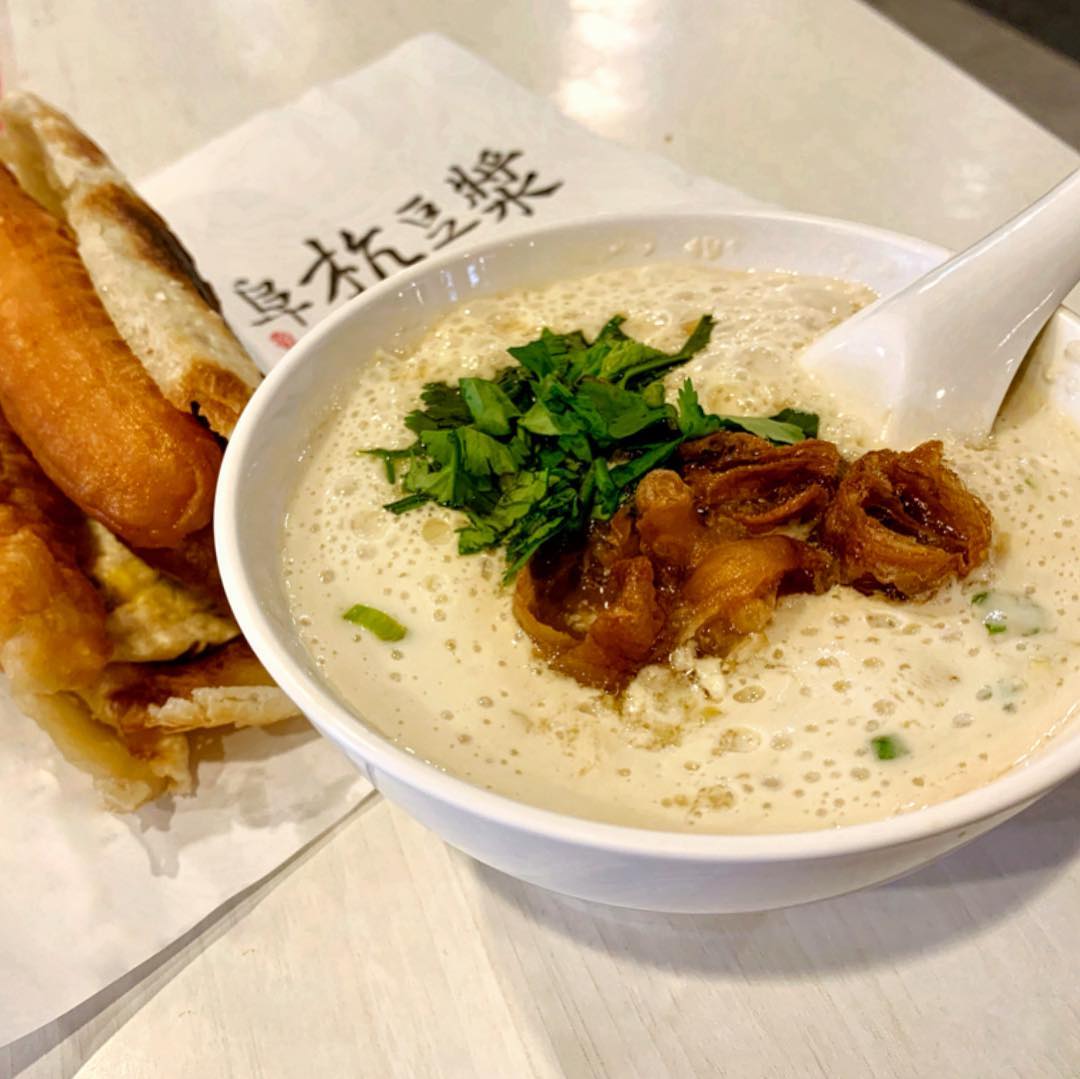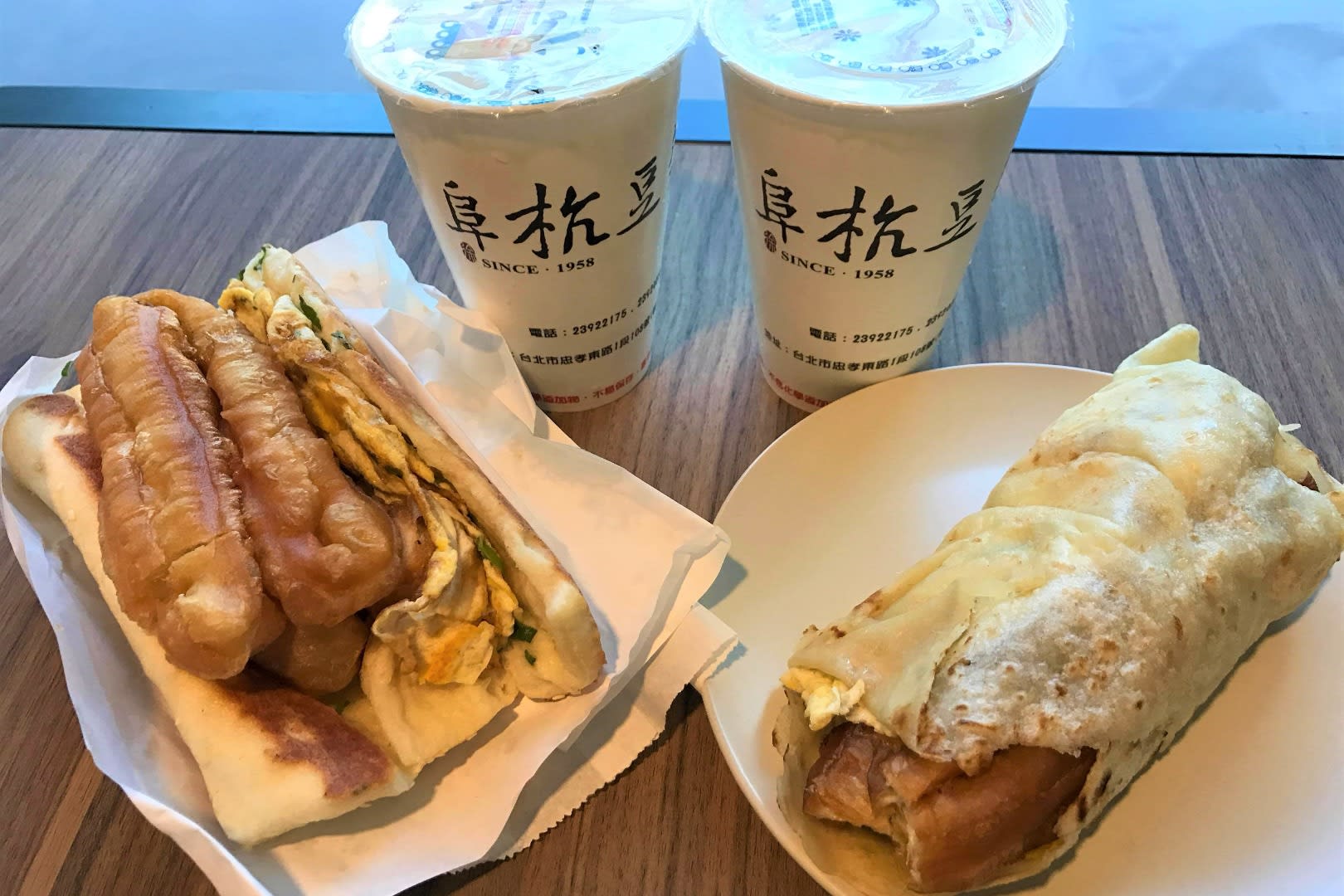Eat your way through Taiwan
Taiwan is home to spectacular hiking trails, a vibrant metropolitan skyline, some of the world’s friendliest people and of course, a fabulous food haven!
If you only have a couple of days to spare in this food paradise, here are 10 unique street eats to put on your Taiwanese food hitlist!
1. Grandma Lai’s Taro Balls
Taro balls, or 芋圓, are ubiquitous in Taiwan – you can find this traditional dessert in almost every region in the country. Served either over chipped ice or as warm dessert soup, the smooth, chewy taro balls are lightly sweetened with a drizzle of syrup.
Though not invented in
Jiufen, some of the best taro balls are made by
Grandma Lai’s Taro Balls in Jishan Old Street, which makes every component from scratch. Their rendition is served with soft sweet potato cubes and green mung beans.
Fresh taro is peeled, steamed, mixed with potato starch and diced into bite-sized pieces. They are then cooked in boiling water to attain its famous “QQ” texture. Available in a variety of flavours such as Original, Green Tea and Sesame, this colourful dessert looks just as good as it tastes!
2. A-Zhu Peanut Ice Cream Roll
Ice-cream spring rolls filled with peanut candy and cilantro?! Sounds like a strange combination – but trust me, this is something you HAVE to try.
Originating from Yilan, A-Zhu’s Peanut Ice Cream Roll in Jiufen’s Jishan Street sells this unique Taiwan snack. This spring roll lookalike consists of two scoops of taro ice cream, grounded peanut candy (apparently made from the waters of Yilan) and sprigs of fresh cilantro.
The smooth ice cream and sandy, salty peanut candy shavings contrast and balance each other beautifully, with the cilantro adding a herby kick at the end.
3. Tianjing Chong Zhua Pancake
Scallion pancakes, or cong you bing, can be found at streetside stalls and restaurants all over Taipei. But for the best of the best, head to Tianjin Chong Zhua Pancake on the bustling Yongkang Street.
You can’t miss this place – there’s always a snaking queue in front of the street stall, where you can see crispy Cong you bing being flipped on the hot griddle right in front of you.
Two things take Tianjin's pancakes to the next level: First, the impeccable layers of crisp crust and fluffy, soft dough. Second, the topping options of ham, cheese, eggs and so on – whatever your stomach desires. There’s something special about their pancakes, plain or jazzed up, that warrant several return trips. Plus, for just $1-$2 a pop, what more can you ask out of a street snack?
4. Grandma’s Iron Egg (Tie Dan)
Iron eggs, or tie dan, originated in the North-eastern town of Danshui and remains a popular snack that is easily available along streets. The best iron eggs can be found at Grandma’s Iron Eggs, a small shop in Zhongzheng Road.
The process of making the chewy tie dan is tedious – the eggs are repeatedly air-dried and boiled in a top-secret broth, to achieve the desired colour and texture. Apparently, each batch of eggs goes through this process 11 times!
The tie dan is savoury, sweet and slightly spicy, and are quite a popular bar snack amongst the locals. You can get them fresh or vacuum-packed, and they come in a variety of flavours including Garlic, Chilli, Soy Sauce and Original.
Fun Fact: Iron eggs were accidentally invented by a restaurateur who sold snacks at a dock in a seaside town. One rainy day when business was slow, she had to continuously cook the eggs in the pot of broth to keep them warm. This resulted in warm, flavourful tie dan that became a huge hit!
5. Liu Yu Zai Fried Taro Ball
Head to Ningxia Night Market for this interesting street snack, which was awarded the Taipei Michelin Bib Gourmand in 2018!
Liu Yu Zai Fried Taro Ball sells their famous Deep Fried Taro Balls with Salted Egg Yolk fresh in batches, all from their tiny street cart along the narrow Ningxia laneway. Each slightly-sweet taro ball has a thin crisp crust, with the soft taro paste dough wrapped around savoury pork floss and lava-like salted egg yolk.
Everything is made on the spot, from working the taro paste around the fillings to deep-frying them so they’re fresh and piping hot. Don’t be alarmed by the long queue – once a new batch has been made, the line moves swiftly.
6. Ba-Wan (Taiwanese Meatballs)
This is not your regular meatball. Taiwan’s 彰化肉圆, or ba-wan, consists of a translucent glutinous dough wrapped around a filling of seasoned pork, bamboo shoots, shiitake mushrooms and shallots. Usually served either steamed or deep-fried, the “meatball” is served in a pool of starchy gravy with a drizzle of sweet chilli sauce.
This unique Taiwanese dish originated from the Beitou region, but you can find it all over Taiwan now. Tonghua Bawan is one place that specialised in ba-wan in Taipei. The contrast between the chewy, slightly gooey skin, soft seasoned pork and crunchy bamboo shoots make this dish something to try when you’re in Taiwan.
7. Aiyu Jelly
Fancy bubble tea might be all the rage now, but don’t skip out on Aiyu Jelly when you’re in Taiwan! This wobbly crystalline jelly is made from the seeds of a variety of creeping fig and is hard to come by outside of Taiwan – authentic ones, at least.
Typically served with fresh lime or lemon juice and lightly sweetened with honey, this refreshing treat is sold in night markets and stalls around the country. Head to Alishan to find some of the freshest Aiyu Jelly in its origin region of Chiayi – where the fig fruits are handpicked from the treetops by local farmers.
愛玉伯ㄟ厝 is a famous shop in Alishan that specialises in Aiyu Jelly desserts and drinks. Enjoy a bowl or mug of this delicious dessert alongside the gorgeous view from the Alishan mountains!
8. Tian Bu La
As you might gather, “QQ” is a popular texture in Taiwanese food – think chewy taro balls and tapioca pearls. The right “QQ” texture is one that isn’t too mushy or hard, but instead, just the right balance of slightly firm and springy.
Tian Bu La is a savoury Taiwanese dish that, when done well, captures this texture to a T.
Directly translated as “sweet not spicy”, think of this assortment of fishcakes as a Taiwanese version of the Japanese model. These fish paste-based pieces come in various shapes and sizes and are first deep-fried before being boiled in broth. Prior to being served, the fishcakes are smothered in a special brown sauce and a side of sweet chilli sauce.
9. Taiwanese Sticky Rice Sausage
The Taiwanese have taken the basic bun-and-sausage hot dog and transformed it into a street snack like you’ve never seen before.
大腸包小腸 (Da Chang Bao Xiao Chang) is literally translated into “Small Sausage Wrapped in Big Sausage” – consisting of a barbecued sweet Taiwanese sausage wrapped in a “bun” of glutinous rice, topped with lettuce, salted vegetables and lots of garlic.
Talk about carb overload. But trust, it’s all worth it. Head over to the Feng Jia Night Market in Taichung for a great rendition of this Taiwanese street snack – you can get it in Spicy and Black Pepper flavours, alongside the Original.
10. Xian Dou Jiang from Fu Hang Dou Jiang
Arguably one of the most popular breakfast joints in Taipei, Fu Hang Dou Jiang boasts a simple menu of traditional Taiwanese breakfast items and insanely long lines. When late morning comes around, the queue often snakes down the block and around the corner – with waiting time ranging from 15 minutes to almost an hour!
You have to order the xian dou Jiang or savoury soybean milk. It’s a hot savoury soup made from curdled soy milk, topped with dried shrimps, pickled vegetables and crispy youtiao pieces. Reminiscent of a saltier, more robust chawanmushi (Japanese egg custard), you’ll either love it or shun it.
Don’t miss out on their sweet soybean milk, egg crepes or shaobing either! Start the day right with a full breakfast, Taiwanese-style. They open at 5.30am, so if you’re looking to beat the queue, it’s best to start queuing by 7am.
 Once winter weather hits, even going outside to rescue the morning paper can feel like a dangerous Arctic expedition. Errands like grocery shopping rise to the top of our "Grown-Up Chores We Wish We Didn’t Have" lists.
Once winter weather hits, even going outside to rescue the morning paper can feel like a dangerous Arctic expedition. Errands like grocery shopping rise to the top of our "Grown-Up Chores We Wish We Didn’t Have" lists.




